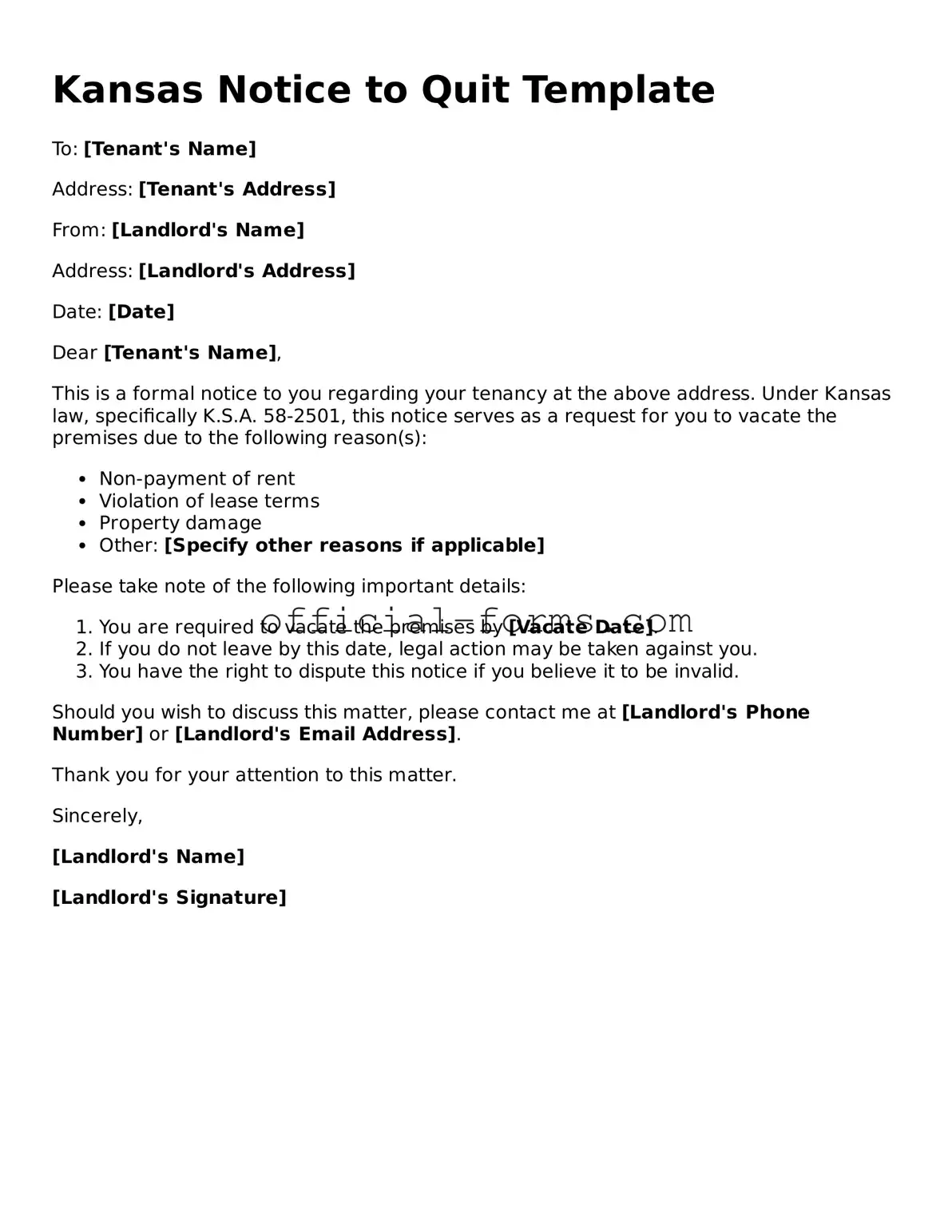Filling out the Kansas Notice to Quit form can be a straightforward process, but mistakes can lead to delays or complications. One common error is failing to provide the correct address of the rental property. It’s crucial to ensure that the property address is accurate and matches what is on the lease agreement. An incorrect address can render the notice invalid.
Another frequent mistake is not including the tenant's full name. The form should clearly state the tenant's legal name as it appears on the lease. Omitting or misspelling the name can lead to confusion and may affect the notice's enforceability.
Many people overlook the importance of specifying the reason for the eviction. Whether it’s non-payment of rent or a lease violation, stating the reason clearly can help avoid misunderstandings. A vague or missing reason may weaken the case in court.
Additionally, individuals sometimes fail to provide the correct date when the notice is served. The date is critical as it marks the beginning of the notice period. If the date is incorrect, it could affect the timeline for the tenant to vacate the property.
Another mistake is not signing the form. A signature is necessary to validate the notice. Without a signature, the document may be considered incomplete and ineffective.
People also sometimes forget to keep a copy of the Notice to Quit for their records. Having a copy is important for future reference and can serve as proof that the notice was served.
It is also essential to ensure that the notice is served properly. Some individuals might attempt to deliver the notice in a manner that does not comply with Kansas law. Understanding the correct methods of service is vital to ensure the notice is legally binding.
Another common error is neglecting to follow up after serving the notice. Once the notice period has expired, it’s important to take the next steps if the tenant has not vacated. Ignoring this can lead to further complications down the line.
Lastly, some people may not seek legal advice when needed. If there are uncertainties about the process or the specific situation, consulting with a legal professional can provide clarity and ensure compliance with local laws.
